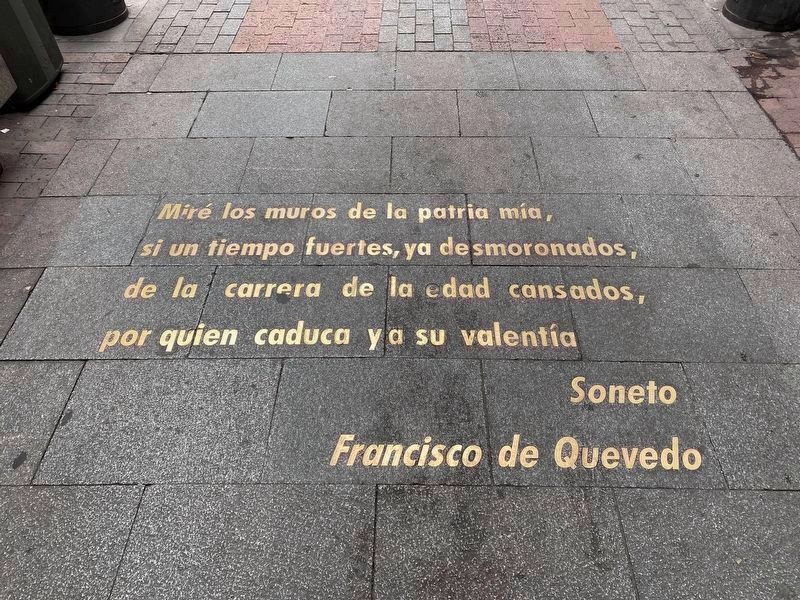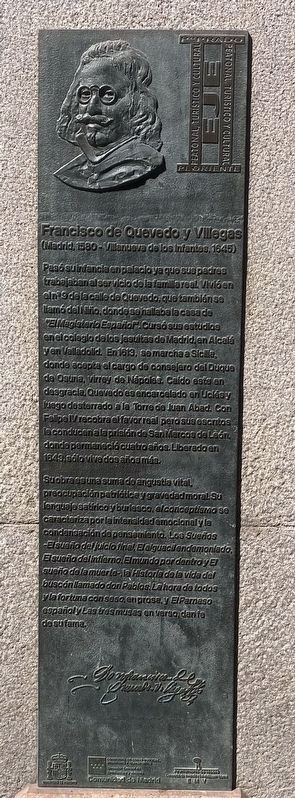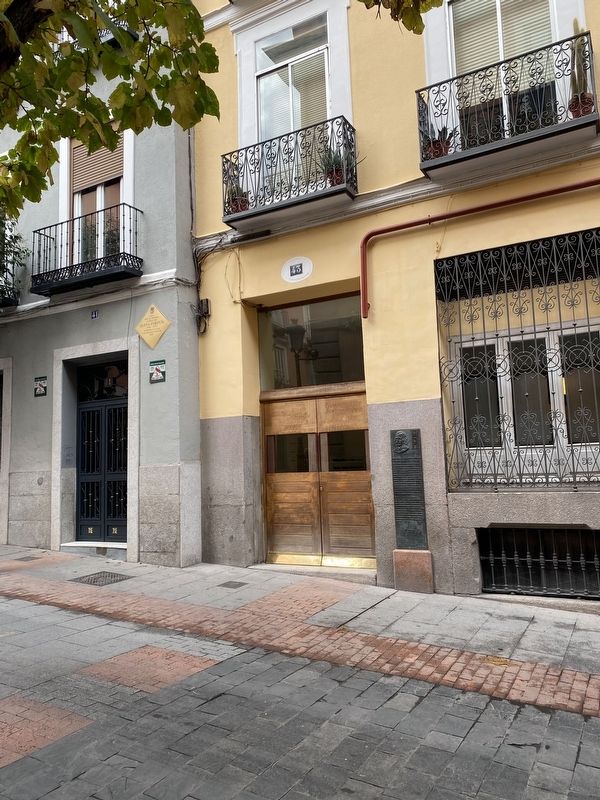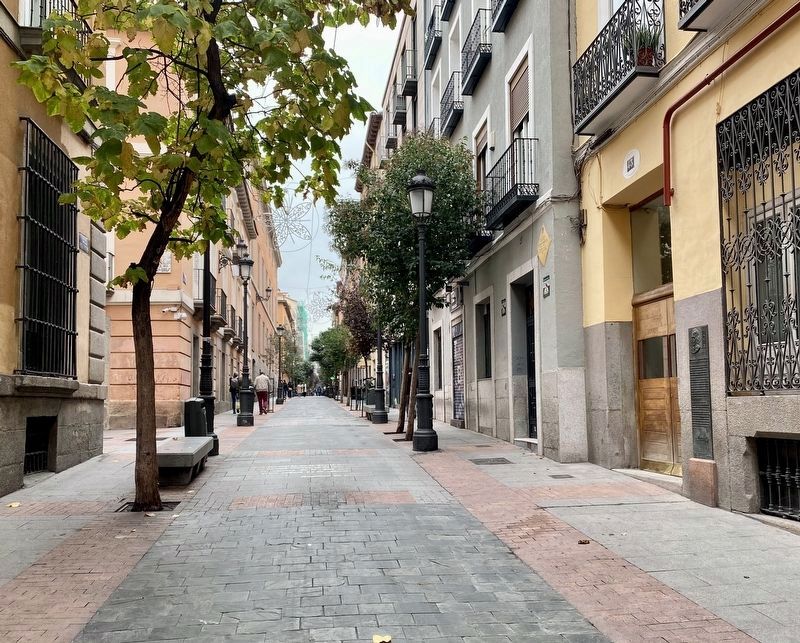Cortes in Madrid, Spain — Southwestern Europe (Iberian Peninsula)
Francisco de Quevedo y Villegas
Francisco de Quevedo y Villegas
(Madrid, 1580 - Villanueva de los Infantes, 1645)
Pasó su infancia en palacio ya que sus padres trabajaban al servicio de la familia real. Vivió en el no 9 de la calle de Quevedo, que también se llamo del Niño donde se hallaba la casa de “El Magisterio Español”. Cursó sus estudios en el colegio de las jesuítas de Madrid, en Alcalá y en Valladolid. En 1613, se marcha a Sicilia. donde acepta el cargo de consejero del Duque de Osuna, virrey de Nápoles. Caído esta en desgracia, Quevedo es encarcelado en Uclés y luego desterrado a la Torre de Juan Abad. Con Felipe IV recobra el favor real pero sus escritos la conducena la prisión de San Marcos de León, donde permaneció cuatro años. Liberado en 1643 solo vive dos años más.
Su obra es una suma de angustia vital, preocupación patriótica y gravedad moral. Su lenguaje satírico y burlesco, el conceptismo se caracteriza por la intensidad emocional y la condensación de pensamiento. Los Sueños - El sueño del juicio final, El alguacil endemoniado, El sueño del infierno, El mundo por dentro y El sueño de la muerte, - la Historia de la vida del buscón llamado don Pablos, La hora de todos y la fortuna con seso en prosa, y El Parnaso español y Las tres musas en verso, dan fe de su fama.
He spent his childhood in the palace as his parents worked in the service of the royal family. He lived at number 9 Quevedo Street, which was also the boy’s name, where the house of "El Magisterio Español" was located. He studied at the Jesuit College in Madrid, in Alcalá and in Valladolid. In 1613, he went to Sicily, where he accepted the position of adviser to the Duke of Osuna, viceroy of Naples. Fallen into disgrace, Quevedo is imprisoned in Uclés and later banished to the Tower of Juan Abad. With Felipe IV he regains royal favor but his writings lead him to the prison of San Marcos de León, where he remained for four years. Released in 1643, he only lives two more years.
His work is made up of vital anguish, patriotic concern and moral gravity. His satirical and burlesque language, the conceptism is characterized by emotional intensity and condensation of thought. The Dreams - The Dream of the Last Judgment, The Demon-Possessed Sheriff, The Dream of Hell, The World Inside and The Dream of Death, - The Life Story of Pablos the Searcher, Everyone's Hour and The

Photographed By Andrew Ruppenstein, November 8, 2022
2. Francisco de Quevedo y Villegas, Sonnet
Miré los muros de la patria mía,
si un tiempo fuertes, ya desmoronados,
de la carrera de la edad cansados,
por quien caduca ya su valentía.
I looked at the walls of my homeland, if once strong, already crumbled, tired of the race of age, for whom their bravery has already expired.
I looked at the walls of my homeland, if once strong, already crumbled, tired of the race of age, for whom their bravery has already expired.
Topics. This historical marker is listed in these topic lists: Arts, Letters, Music • Entertainment. A significant historical year for this entry is 1613.
Location. 40° 24.81′ N, 3° 41.882′ W. Marker is in Madrid. It is in Cortes. Marker is at the intersection of Calle de los Huertas and Calle del Amor de Dios, on the right when traveling west on Calle de los Huertas. Touch for map. Marker is at or near this postal address: Calle de los Huertas 43, Madrid 28014, Spain. Touch for directions.
Other nearby markers. At least 8 other markers are within walking distance of this marker. Elena Fortún (here, next to this marker); Ricardo Becerro de Bengoa (a few steps from this marker); Emilia Pardo Bazán (La Coruña 1851 - Madrid 1921) (a few steps from this marker); Daniel Urrabieta Vierge (1851 - 1904) (within shouting distance of this marker); José Echegaray (within shouting distance of this marker); Miguel Cervantes Saavedra (within shouting distance of this marker); Sor Marcela de San Félix (within shouting distance of this marker); Miguel de Cervantes Saavedra (within shouting distance of this marker). Touch for a list and map of all markers in Madrid.
Credits. This page was last revised on June 15, 2023. It was originally submitted on January 28, 2023, by Andrew Ruppenstein of Lamorinda, California. This page has been viewed 44 times since then and 8 times this year. Photos: 1, 2, 3, 4. submitted on January 28, 2023, by Andrew Ruppenstein of Lamorinda, California. • J. Makali Bruton was the editor who published this page.


